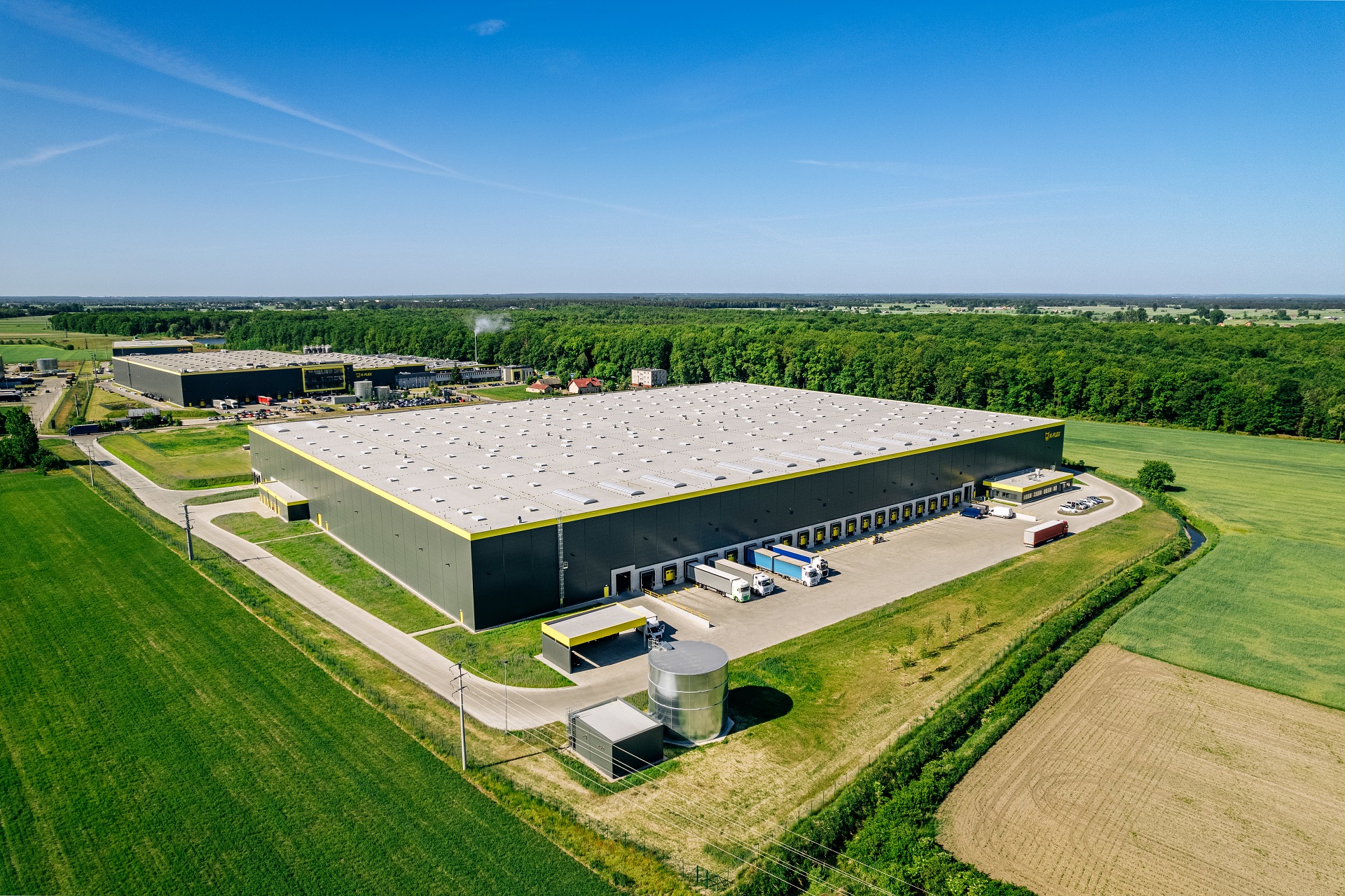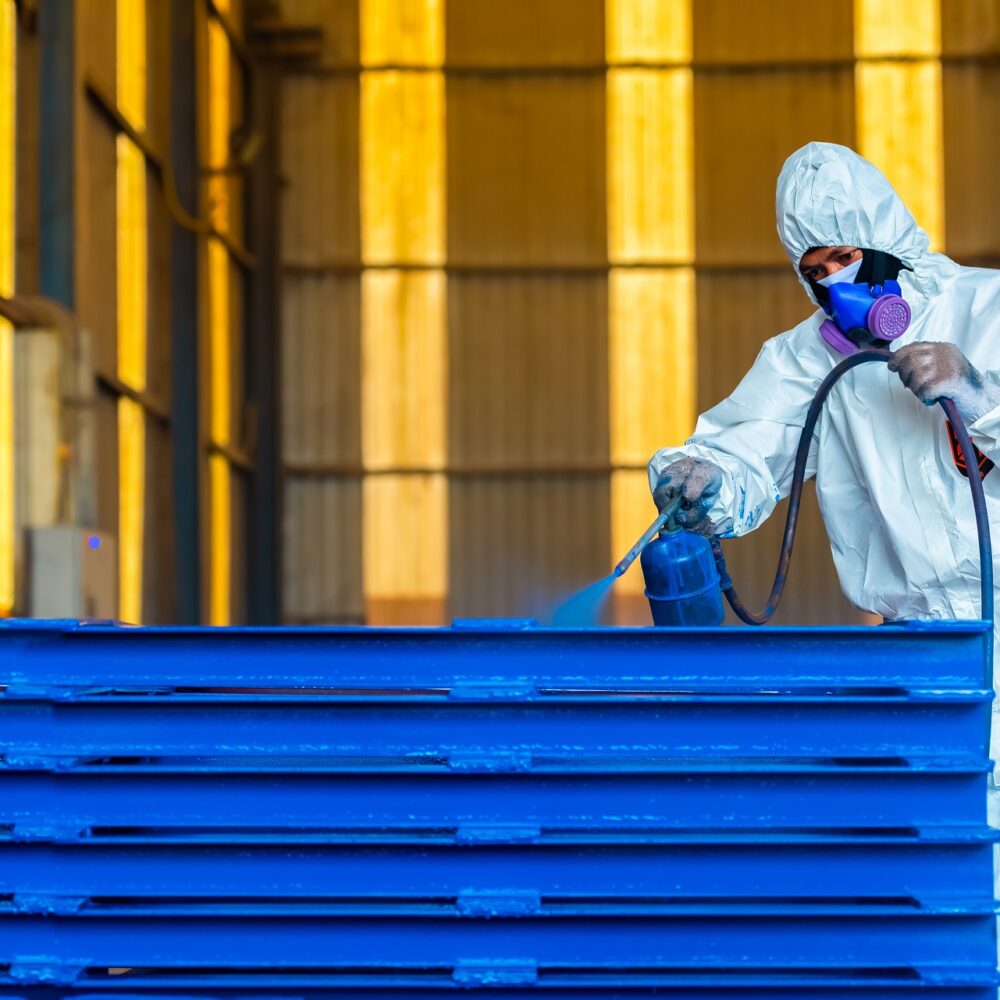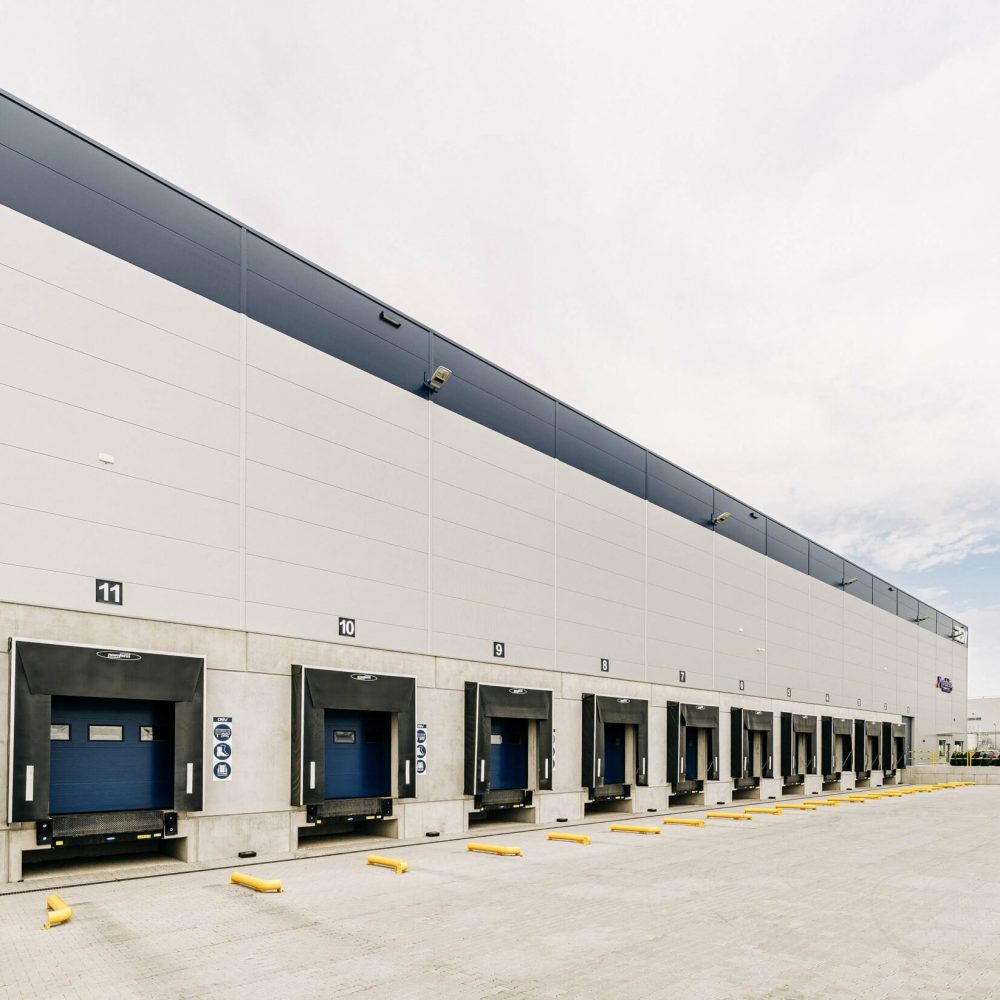
Industrial facilities are a key part of the infrastructure in many sectors of the economy. They can be a place for production, but also for the storage and distribution of goods. One important aspect of smooth hall operation is the landscaping of the area around it, taking into account the internal road layout. The design and construction of a road next to a steel hall is an issue that requires special attention. In this article, we will discuss what to look out for when planning the road layout at the halls, what permits are needed and how to organise traffic around the facility.
Designing the road around the hall – applicable regulations
The design of the road around the industrial hall, as well as the access roads to it, is governed by the Regulation on technical conditions to be met by buildings and their location. It stipulates that access to and from the public road must be provided to allow pedestrian traffic and vehicle movement and parking. Moreover, these roads must comply with fire protection conditions as defined by separate regulations.
What legal aspects of the road layout next to the halls should be given special attention?
- Minimum widths of manoeuvring routes by one-way and two-way
- Adequate depth of parking area at the docks
- The load-bearing capacity of the pavement, which must be adapted to the type of vehicles, the weight of the goods transported and the average daily number of journeys.
- Type of surface applied
- Drainage of rainwater
- Electric lighting that must provide suitable conditions for use around the clock
What permits do you need to build a road?
The road system next to the halls is rarely discussed in for individual projects. This is usually included in the comprehensive building construction project, with the general contractor being responsible for all construction work. Therefore, in the case of a comprehensive project, the entire scope, i.e. buildings, roads, but also the systems and plants, is subject to planning permission. In this case, the road design is one of the studies of the construction project. It is the responsibility of an authorised road designer, who must comply with all applicable legislation when designing the road around the hall. Ideally, this designer should be part of the design team responsible for the entire project, which has been separated from the general contractor’s structures. The long experience of construction companies such as ours shows that this “design and build” approach is the most effective in terms of both time and cost.
Regulatory compliance is, of course, paramount, but when designing the road system next to the halls, it must not be forgotten that the facility is being erected for a specific purpose, i.e. to serve its future users in the best possible way. Therefore, it is essential at the design stage to consult with the investor (future user) and to define their needs in terms of people and vehicle traffic, including an estimate of its intensity. It is very important to define the requirements related to parking and parking spaces for employees and arriving visitors, as well as loading and unloading areas for goods.
Traffic organisation around the hall
The roads next to the industrial halls and warehouses are not public roads but private or otherwise internal roads. As a rule, there are no traffic regulations on such roads, although of course, for the sake of order and safety, such regulations are often introduced. The solution here is to zone internal roads for traffic. The D-52 Traffic Zone sign comes to the rescue, when it is erected, the scope of the traffic regulations is extended to include the zone restricted by signs: “Traffic zone” and “End of zone”. Importantly, in such a zone, a driver can be fined by the police for non-compliance.
Here are the main aspects of traffic organisation on such roads:
- Traffic regulations: if the D-52 Traffic Zone sign is used on the internal roads around the industrial hall, the same traffic regulations apply as on the public roads. This means that drivers and pedestrians must obey traffic signs, traffic lights, speed limits and other regulations, just as on standard roads.
- Traffic signs: proper marking of an internal roads is key. The signs must comply with regulations and should clearly inform users of traffic rules, parking spaces, speed limit areas and provide other relevant information.
- Traffic safety: the design of the road around the hall must take into account the safety of road users, including hall workers or suppliers. Appropriate safety measures such as railings, barriers, horizontal signage, as well as adequate lighting are necessary.
- Loading and unloading areas: in the case of an industrial hall where increased loading and unloading of goods takes place, it may be necessary to mark special loading areas and introduce additional traffic regulations.
- Access for emergency services: it is imperative that the road layout at the halls provides access to the hall for emergency services in the event of accidents or medical intervention.
Designing the road around the hall – what to look out for?
The service of building an industrial hall extremely rarely involves only the erection of a building. Typically, the scope of work includes general contracting for the project, which also includes the development of the surrounding area, where the following is built: technical infrastructure, e.g. a fire water reservoir with a pumping station, internal road layout next to the halls, parking spaces and green relaxation zones. Having specialised for many years in the comprehensive implementation of industrial projects, from design and construction to obtaining the necessary permits for the use of the facility, we are well aware that a well-designed surroundings will allow the company to operate smoothly in the future. It will increase both the safety of pedestrian and vehicle traffic and the efficiency of the operations carried out – above all those of a logistical nature. And in the case of warehouses, this will be crucial.
What should be taken into account?
- Linking internal roads into an efficient interchange with the public road
- Designing the road around the hall so as to avoid steep driveways and sharp curves that can significantly impede the movement of heavy vehicles along them
- Delimiting parking zones so that there are no collisions with heavy goods vehicles and pedestrian traffic
- Delimiting and appropriate marking of pedestrian and vehicle zones
- Ensuring adequate layout of loading and unloading areas so as not to impede traffic on internal roads
- Ensuring proper lighting of both the internal road at the steel hall and the individual areas to create safe conditions for use around the clock



